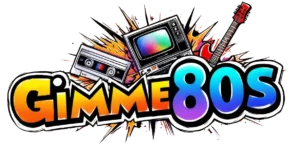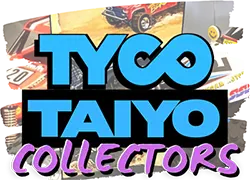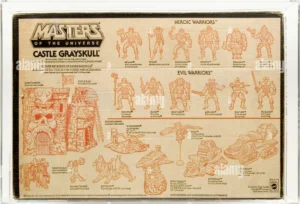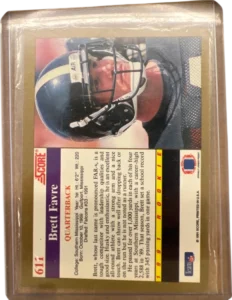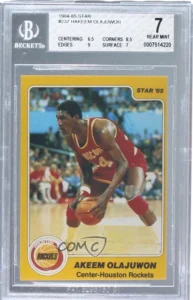1994 Apple MessagePad 110

Running this archive is expensive! To help pay these bills, I use the eBay Partner Network, so if you click on an eBay link and buy, I earn a small commission at no cost to you.
VALUE / PRICE HISTORY
Average Price
$149.99
Highest Price
$1575.00
| Date | Price | Condition | Type | Title |
|---|---|---|---|---|
| 2025-08-15 | $40 | Unknown | Buy | Newton MessagePad 110 - NOT WORKING , MISSING PEN |
| 2025-07-30 | $50 | Unknown | Buy | Newton MessagePad 110 - Tested And Working w/ Charging Stand *Read |
| 2025-07-28 | $99.99 | Unknown | Buy | VTG APPLE NEWTON MESSAGE PAD 110(H0059)STYLUS 4MB CARD LEATHER CASE POWER ADAPT. |
Prices in USD. While all care is taken, there is no guarantee on accuracy of this data.
ITEM REVIEW

Background
The Apple MessagePad 110 was a personal digital assistant that was manufactured by the well-known technology company Apple and subsequently released in 1994, serving as a significant component of the Newton platform that had the ambitious goal of redefining portable computing throughout the early 1990s. Codenamed “Lindy,” it came into existence as an incremental upgrade to the original MessagePad 100, which had made its debut the previous year to a mixture of reviews that were both positive and negative due to its ambitious—and at times unreliable—handwriting recognition feature. The development of the 110 coincided with Apple’s broader initiative to expand into the mobile computing market under the leadership of CEO John Sculley, who famously coined the term “PDA” (Personal Digital Assistant) in order to position the Newton line as a bridge between traditional paper organizers and contemporary laptops.
Sharper in design than its predecessor, the 110 showcased a redesigned rubberized case that was not only thinner but also easier to grip, effectively addressing critiques regarding the bulkiness associated with earlier models. Internally, it housed 1 MB of SRAM—double the amount of usable storage available in the MessagePad 100—alongside a 20 MHz ARM 610 processor, which, for its time, was considered relatively zippy. The device was shipped with Newton OS 1.3, an updated version of the software that significantly improved the accuracy of handwriting recognition while also introducing several minor bug fixes. Despite these various tweaks, the Newton platform continued to be a polarizing experiment, caught in the middle of the limitations imposed by mid-1990s hardware and Apple’s overarching vision for an all-in-one digital ecosystem.
Features



The MessagePad 110’s hardware represented a study in contrasts, balancing cutting-edge components with pragmatic compromises. Its 320×240 monochrome LCD screen, which was pressure-sensitive and paired with a stylus, supported both doodling and text entry; however, users often found themselves resorting to writing in block letters in order to avoid misinterpretations of their handwriting. Under the hood, the ARM 610 RISC processor—a novelty that was quite uncommon in consumer electronic devices at the time—handled a variety of tasks such as calendar management, note-taking, and basic formula calculations; however, complex operations could feel sluggish when evaluated by modern standards. The storage was split between 4 MB of ROM (which was designated for the operating system) and 1 MB of SRAM, with only 480 KB available for user data—this amount was sufficient for storing contacts and memos, but not much else without the addition of external add-ons.
Connectivity options leaned into the experimental side of the era, featuring an infrared port that allowed for the “beaming” of notes between devices and a PCMCIA slot that facilitated the use of expandable memory or modem cards. The Newton OS 1.3 software introduced a handful of quality-of-life improvements, including better cursive recognition and a more refined interface; however, it still lacked several features that users might expect in today’s technology—such as a copy-paste function, for instance. A few quirks stood out: the device operated on four AA batteries, which lasted up to 10 hours, and its rather chunky form factor (measuring 8 inches tall and weighing 1.28 pounds) made it more backpack-friendly than suitable for carrying in one’s pocket. For those who were willing to splurge a little, an optional folding keyboard could be paired via the serial port, effectively transforming the 110 into a rudimentary word processor.
Popularity and Legacy
Sales of the MessagePad 110 were relatively modest, with a price tag of $599 placing it firmly within the “early adopter” category—cheaper than a laptop but still more expensive than traditional paper planners such as the Filofax. Reviews from the mid-1990s praised its improved handwriting recognition capabilities when compared to the original Newton, although accuracy still hovered around 85-90%, depending on the user’s individual penmanship. Technology magazines of the era positioned it as an intriguing curiosity with potential, likening it to a “digital legal pad” specifically designed for professionals who did not mind facing a bit of a learning curve. By late 1995, Apple had moved on to the MessagePad 120 and 130 models, which introduced backlit screens and increased memory, leaving the 110 as a transitional device within the Newton’s rather short-lived lineup.
The Newton platform as a whole was ultimately discontinued in 1998; however, the MessagePad 110’s DNA resurfaced many years later in Apple’s touchscreen devices. The iPad’s debut in 2010 reignited interest in the Newton as a precursor to modern technology, while the introduction of the Apple Pencil in 2015 drew comparisons to the stylus-driven input system utilized by the 110. Modern iPadOS features such as Scribble—which effectively converts handwriting into text—owe a clear debt of gratitude to Newton’s Rosetta recognition software, even if the execution of such features is considerably smoother today. Among retro tech enthusiasts, the 110 is remembered less for its commercial impact and more for its significant role in normalizing the concept of portable, touch-based computing—a concept that felt quite alien to many individuals back in 1994.

Video Reviews and Commercials
Availability and Collectability
Today, the MessagePad 110 occupies a unique niche within the collector’s market, with prices spanning from $50 for untested units to over $300 for models that are in mint condition and come complete with original packaging. The scarcity of these devices varies by geographical region—units that were sold in Japan (where Sharp handled the manufacturing process) sometimes surface with unique accessories, such as rare PCMCIA cards. The collectability of the device is primarily dependent on its place in Apple’s history rather than its practicality, as modern emulators and applications such as Newten can replicate much of its functionality on contemporary hardware. Nevertheless, owning a physical MessagePad 110 offers a tactile nostalgia experience, from the distinct click of its power slider to the graininess of its monochrome display.
Factors that affect the value of the device include the condition of the batteries (as leakage is a common issue in units that have been stored for decades) and the completeness of the software. Some sellers bundle vintage Newton applications on PCMCIA cards, including the unfinished formula-recognition tools that were never officially released to the public. Online communities, such as the Newton Talk mailing list, keep the platform alive by providing troubleshooting guides and modifications, while eBay auctions occasionally feature prototype units or developer kits. For those who are less inclined to hunt down physical hardware, the Internet Archive hosts scans of periodicals such as Information Alley, which was Apple’s Newton-focused newsletter, offering a valuable window into how the 110 was marketed during its brief period of popularity.
Like it? Then you might also like...
DISCUSSION
Information here is to the best of my knowledge at the time of writing, and is frequently updated and improved as I learn more. Contact Me for Feedback or Corrections. Gimme80s.com is not responsible for inaccurate information or commentary, media, or links posted by 3rd parties.
